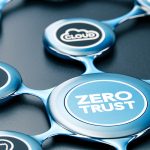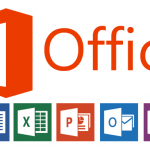The KM comeback: How IT leaders can optimize a knowledge-driven business future

Knowledge management (KM) -- a concept first established in the 1980s -- is now witnessing both a rapid comeback and a transformation. A perfect storm of factors is contributing to these trends, including the shift to remote and hybrid work; dramatic changes in customer and employee perceptions; "The Great Resignation" that took place in 2021 and the wave of tech company layoffs that followed it; and most notably, the continued explosion in the amount of unstructured content -- scattered across a growing number of siloed applications.
Knowledge Management has made its way back on the CIO agenda as one of the most important initiatives for business resiliency in the years ahead. And, now IT leaders assess how best to implement technologies that discover, cultivate and protect the collective knowledge of an organization and seamlessly disseminate it to employees where and when they need it. This new version of KM promises that the latest technology can help tame content chaos; however, doing that successfully means addressing a number of challenges.
What could the future hold for drivers in the Metaverse?

While the Metaverse is still somewhat in its infancy, it has tech-heads all over the globe coming up with all sorts of theories and concepts for the future. The world of augmented virtual reality is currently so undefined that we’re seeing governments like Dubai building strategies to create 40,000 jobs in the metaverse and bring $4 billion to their economy.
There have been all sorts of talk surrounding personal avatars and property in this futuristic landscape, but what about vehicles? Could we see the potential for people to buy or rent vehicles in this virtual reality?
Preventing bank fraud: The role of antifraud technology and human behavior

The requirements and standards for information security are continuously being enhanced and revised, driven by various external factors such as the COVID-19 pandemic and the rising expertise of cyber attackers. As a result of this cyber arms race, novel methods and vectors of attacks are emerging. In addition, an increasing number of people in the world are utilizing mobile devices and other remote work means.
This poses additional security challenges. Implementing antifraud systems in financial institutions can considerably mitigate the impact of both traditional and new types of fraudulent schemes.
Asset management and security -- how to secure your whole tech stack

In a tumultuous geopolitical environment, organizations use digital transformation initiatives to accelerate and maintain their productivity. Companies want IT to increase innovation and improve the efficiency of processes across their business. At the same time, IT leaders are under mounting pressure to gain full visibility of their infrastructure. This pressure stems from the need to minimize or mitigate the risk of any disruption that could directly impact customers, shareholders and employee data.
Without a clear understanding of where your tech stack sits today, those future goals will forever be out of reach. Whether you are a brand new CIO taking on IT responsibility for the first time, or a seasoned CIO with years of experience, being able to go between the big picture and the nuanced details is a necessary skill to develop.
GDPR, liability and email security management in the digital age

On the 25th of May, 2018, the General Data Protection Regulation (GDPR) was passed, bringing into law a number of privacy and data protection regulations for those within the EU. Any business that operated within the EU had to immediately begin to respect the regulations laid out by this law.
Yet, even businesses outside of the EU are impacted, due to the fact that anyone that does business with someone within the EU area still must fall under these regulations. This meant that the vast majority of international companies, stretching from Asia and South America to North America and beyond, all had to start abiding by these laws.
Tips for developing a better SASE strategy

Secure Access Service Edge (SASE) architecture has become a cornerstone for IT and security teams in recent years. SASE became important when demand for cloud-based operations soared, and organizations needed a better way to ensure consistent, fast, and secure access to resources on any device at any location. Today, SASE architecture continues to grow and by 2024, at least 40 percent of enterprises will have strategies in place to adopt SASE. But managing architecture that combines secure access and SD-WAN capabilities with cloud-native security functions, like web gateways, cloud access security brokers, firewalls, and zero-trust network access, is no small feat.
Understandably, SASE deployments can be complex and make end-to-end visibility challenging for IT. In this article, I’d like to explore some of the key criteria to consider when implementing SASE (outside of the obvious cyber security requirements). But first, I’d like to review a few foundational elements including integration, visibility, and remote access.
Making zero trust a reality in 2023: why identity-first security will be a 'must have'

In today’s mobile and cloud-first world, zero trust has become a key requirement for organizations looking to secure the digital infrastructures where their applications, data, users and devices reside.
There’s little doubt that COVID-19 changed the rules of the game where enterprise security is concerned. Historically, security models were based on 'castle and moat' style architectures where the enterprise’s network and data center were guarded by firewalls on the perimeter. When users left the 'trusted' enterprise network, VPNs were used to extend the enterprise network to them.
Why standardization is important for the mobile industry

A rising tide lifts all boats, and the mobile industry has learned that cooperation and collaboration helps everyone. Standardization has helped the sector evolve, touching everything from commerce to healthcare. In 2019, mobile technologies and services contributed $4.1 trillion of additional economic value (around 4.7 percent of global GDP), equating to around $490 billion in tax revenue.
These figures are only likely to grow as more people globally take up mobile services, especially in rapidly-developing nations like China and India. Additionally, with the introduction of wireless 5G technology, more devices are able to connect to the internet, helping to expand the Internet of Things (IoT) market.
In retail, an expanded customer journey brings new IT challenges

Historically, retailers and their IT partners have looked at Black Friday and Cyber Monday as critical markers, wanting all technology and website changes to be locked ahead of the busiest shopping days of the year. They have wanted the customer journey to be free from the unexpected detours that lead to abandoned shopping carts. But these days, while companies must execute flawlessly during the major holiday season, they can't let any balls drop throughout the year. Customers have so many online options. For retailers, every day is a critical shopping day, and companies need to put their best foot forward. Otherwise, customers will walk away.
Sometimes, before a customer abandons a shopping cart, they will contact a customer service representative for assistance. Because companies know how important it is for their customer service teams to help customers navigate through their shopping journeys, companies are investing more tech resources into making sure that the employees’ digital experiences are free from hassles.
Data protection in the cloud: 3 best practices

The "Global DataSphere" is exploding in size. IDC predicts that by 2026, the amount of data in the world will have doubled again. While most enterprises have digitized their operations, they continue to add more strategic workloads and create more and more data. So, as the amount of data enterprises have to deal with grows exponentially, moving to the cloud based on an elaborated strategy offers significant benefits like scalability, flexibility and cost-effective storage.
But can this go on forever? Gartner expects total worldwide end-user spending on public cloud services will reach a record $592 billion this year, a 21 percent increase from 2022. This rapid level of growth and migration raises some concerns at an enterprise level, with fast "lift and shift" migrations meaning best-practices for modern data protection aren’t followed. The Cloud security alliance (CSA) reported that 96 percent of companies say they have insufficient security for sensitive cloud data -- so across the board we have a long way to go on this journey. Here are three best practices for enterprises to protect their data in the cloud.
End-user experience management delivers on cost-saving and Net Zero targets

CIOs are under constant pressure to cut costs, reduce tech waste, and increase productivity, but never more so than this year with the looming threat of recession. Rather than concerning themselves with the issues a weakened economy may bring, savvy CIOs should consider the opportunity 2023 brings to meet longstanding efficiency and sustainability goals.
By gaining observability to the health of their IT infrastructure -- specifically, the end-user experience -- executives can gain insights, software and hardware performance analysis to find critical cost reductions. An IT infrastructure review could improve efficiency and, in turn, make business more productive, profitable, and sustainable.
Why the economic downturn is the perfect time to simplify your identity data

As we begin a new year, things look bleak for the global economy. In January, the World Bank predicted global GDP to hit just 1.7 percent growth, the worst since 1993 outside of recessionary periods.
Organizations around the world are tightening their belts in preparation for lean times. Hiring freezes and reduced spending on facilities and IT are usually the natural reaction to economic uncertainty.
Optimizing hybrid cloud application delivery

For digital businesses, success depends on application performance. Organizations must deliver the best possible experiences for employees and customers while driving innovation and ensuring security. To do this, enterprises are increasingly migrating application delivery to hybrid/multi-cloud environments to achieve increased agility and resiliency.
But are businesses achieving these benefits? A10 Networks and Gatepoint Research surveyed senior technology decision-makers around the globe, revealing key insights into their experiences delivering applications in the cloud and their priorities around application delivery controllers (ADC).
Medical device post market surveillance: Updates and trends

Post-market surveillance (PMS) is a critical part of pharmacovigilance, the science that focuses on the detection, evaluation, monitoring, and prevention of the unwanted effects of pharmaceutical products. It is vital in ensuring the safety and effectiveness of medical devices.
With the crucial role PMS plays in the healthcare industry, it merits the attention of patients, device manufacturers, and regulators. There have been developments involving or affecting post-market surveillance that needs to be highlighted because of their far-reaching consequences.
Adios, Microsoft Office 2013 support: What IT pros should know for migrations

It always sounds dire. "After five years of mainstream support, and five years of Extended Support, Office 2013 will reach the End of Extended Support on April 11, 2023," warns Microsoft. "Per the Fixed Lifecycle Policy, after this date security updates for Office 2013 will no longer be available."
At the end of support, the official statement continues, "Microsoft won’t provide any new security updates, and the continued use of Office 2013 after April 2023 may increase your organization’s exposure to security risks or impact your ability to meet compliance obligations." And dire it can be.
